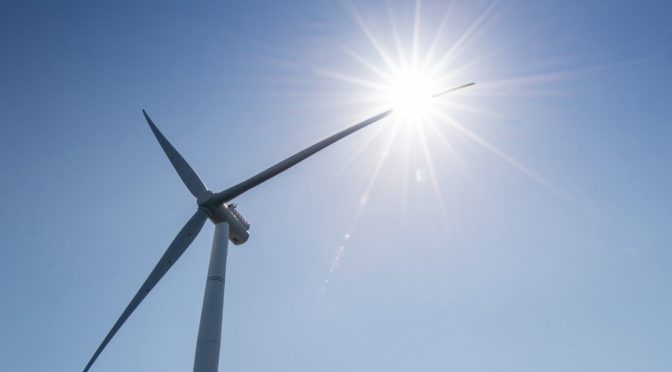The Global Wind Turbine Generator Supply Chain Update 2021 marks GWEC Market Intelligence’s first assessment of the supply chain for this key component. The report is part of GWEC Market Intelligence service, which provides insights and data-based analysis on the development of the wind industry, available exclusively to GWEC Members.
The generator is a key component to convert wind power into electricity, which makes up approximately 4-6% of the conventional turbine cost or up to 40% of the direct drive turbine cost. As it’s the case for many other key turbine components, generators are both manufactured in-house by wind turbine manufacturers and sourced from independent generator suppliers.
According to GWEC Market Intelligence’s latest Global Wind Turbine Generator Supply Chain Update 2021, 40% of global generator demand can be supplied by wind turbine manufacturers’ in-house production. The report finds that out of the 35 turbine OEMs that reported turbine installation in 2020, 18 have directly or indirectly controlled manufacturing facilities for generators.
On the third-party suppliers’ market, competition has been very intense. Due to huge cost reduction pressure and intense competition among independent suppliers, the number of suppliers has dramatically reduced in the past five years. At least ten generator suppliers have ceased operation in this sector since 2016 due to policy uncertainty, overcapacity, and huge cost reduction pressure.
Based on GWEC Market Intelligence’s Q3 2021 Global Outlook, no supply chain constraint is predicted for wind turbine generators in the next five years. Nevertheless, to keep a healthy balance between demand and supply and to meet the new growth driven by net zero, those turbine OEMs who have in-house production for generators and third-party generators suppliers need to closely follow the trends of turbine drive train technology in the wind industry and to prepare new investment ahead of time.
Price competition and the recent increases in commodity prices for critical materials for turbine generators, largely driven by the negative impact of COVID-19 on the supply chain, are driving transformation in this industry. The global market for wind power keeps expanding rapidly, with a forecasted record of over 100 GW new global wind installations in 2024 and over 110 GW in 2025, but wind turbine OEMs must closely follow market trends to ensure they can stay ahead in this extremely competitive market segment.” Feng Zhao, Head of Strategy and Market Intelligence, GWEC Tweet
Feng Zhao, Head of Strategy and Market Intelligence at GWEC, commented: “Price competition and the recent increases in commodity prices for critical materials for turbine generators, largely driven by the negative impact of COVID-19 on the supply chain, are driving transformation in this industry. The global market for wind power keeps expanding rapidly, with a forecasted record of over 100 GW new global wind installations in 2024 and over 110 GW in 2025, but wind turbine OEMs must closely follow market trends to ensure they can stay ahead in this extremely competitive market segment.”
The Global Wind Turbine Generator Supply Chain Update 2021 offers a comprehensive analysis of generator systems used by the wind industry, key trends and developments observed in the supply chain management of key wind turbine OEMs, as well as market trends in both well-established and rapidly growing markets for wind globally.
The full report is exclusively available for GWEC members and is available in the Market Intelligence Members Area on the GWEC website.
If you are not yet a GWEC Member or subscriber of GWEC Market Intelligence, please contact Marina Prado Romera at [email protected] or Aileen Vitug at [email protected] to find out more on how you can access GWEC Market Intelligence products.


